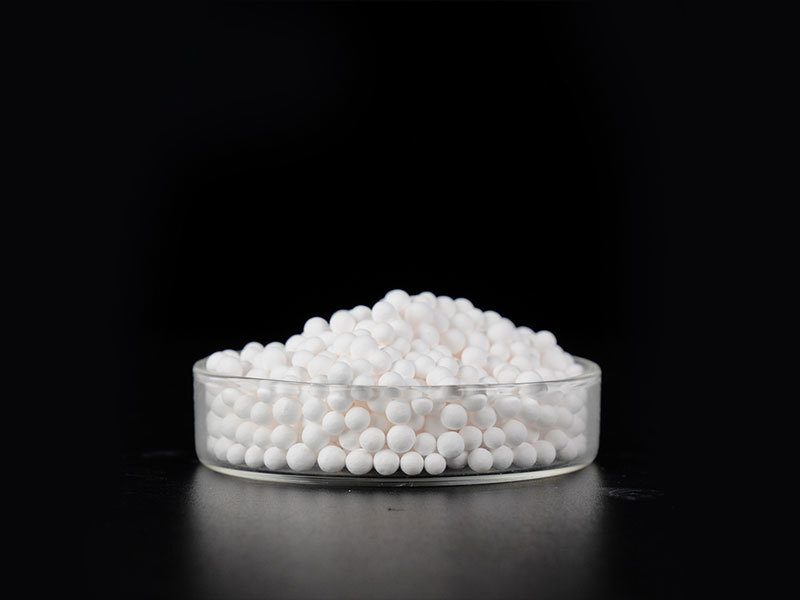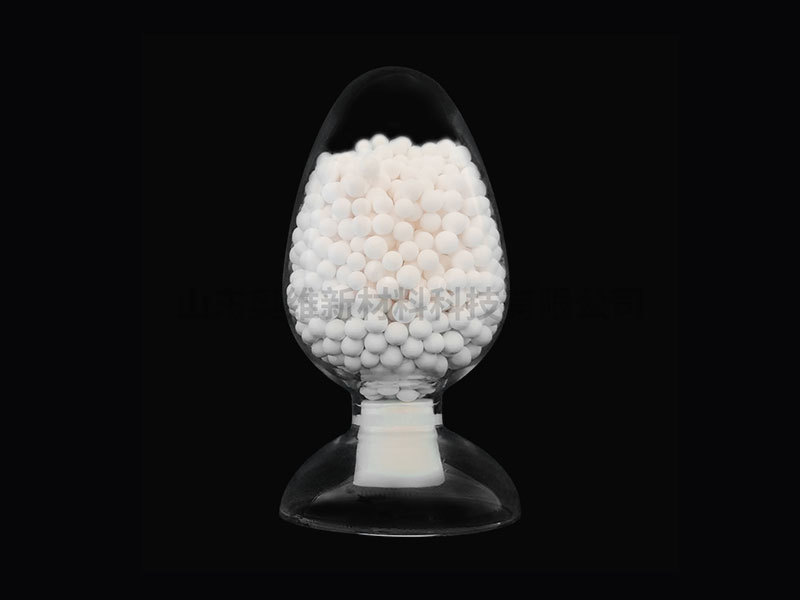Product Center
Alumina Desiccant
Key words:
Category:
Product Details
Introduction:
The desiccant is spherical activated alumina. Its properties are non-toxic, odorless, non-powdering, insoluble in water, white spherical in appearance, and strong in absorbing water.
Performance:
Activated alumina has spherical particles with many capillary pores, which are highly polar to water and other molecules. It has a strong affinity, is a non-toxic, non-corrosive effective desiccant, and its static capacity is high.
Feature:
High strength, large adsorption capacity, low dew point, strong regeneration ability
|
Specification |
Index |
|
Crystal Phase |
x-ρAl2o3 |
|
Sphere Size mm |
¢3-5 ¢4-6 ¢5-7 |
|
Appearance |
White Sphere |
|
Bulk Density g/ cm3 |
0.68-0.80 |
|
Crush Resistance N/Sphere ≥ |
150-300 |
|
Surface Area ㎡/g |
280-360 |
|
Pore Volume cm³/g |
0.4-0.52 |
|
Static adsorption capacity % ≥ |
18 |
1. Is there any re-use of the used desiccant?
If the desiccant is still effective, it can be used for the preservation of household food or the drying of shoes, etc. Lime desiccant (AYM) is in the form of particles before it absorbs temperature, but is powder after moisture absorption, just look inside the bag Whether there are particles in the dry explosive agent, if any, it is still effective. There is no change in shape of silica gel and clay, so its residual ability cannot be confirmed. As the color-changing silica gel mixed with blue glue absorbs moisture, the color gradually becomes pink and the silica gel becomes ineffective. However, considering environmental protection issues recently, the use of color-changing silica gel mixed with cobalt chloride has been discouraged.
2. How to discard the desiccant.
Dispose of as non-burning garbage in the household. Because quicklime, the raw material of RAYM, may heat up immediately when it comes in contact with water, it is strictly forbidden to abandon it in a place with a lot of water.
3. What should I do if I accidentally eat lime desiccant?
The raw material quicklime (Ca0) reacts with water to generate heat. If you find signs of burns, please consult a doctor for observation. If you accidentally swallow slaked lime that has absorbed moisture and becomes powdery, you generally only need to rinse your mouth. Hydrated lime is non-toxic (calcium hydroxide) and can be used as a material for food paint additives. However, its aqueous solution is strongly salty and can irritate the mucous membranes, so please drink a lot of water or milk and consult a doctor for observation.
4. What should I do if I eat silica gel or clay by mistake?
Silica gel and clay are chemically stable and will not be digested and absorbed even if swallowed by mistake. If swallowed, please drink plenty of water, milk, tea, etc. after rinsing your mouth. If it gets into the eyes accidentally, please do not rub it, and rinse immediately with tap water.
5. What should I do if the desiccant is cooked with food and eaten by mistake?
The desiccant is non-toxic and the contents will leak out from the pouch after heating, but it has no effect on the human body. So no special treatment is required. If you are very worried, please consult a doctor.
6. The desiccant in food swells greatly, why?
The desiccant that swells is lime desiccant. The raw material of the lime dry explosive agent is quicklime (calcium oxide). Quicklime becomes hydrated lime (calcium hydroxide) after it absorbs moisture. Its shape changed from particle to powder. The volume increases 2-2.5 times. Therefore, when designing the desiccant pouch, our company has considered its expansion factor and increased the size of the bag to prevent it from breaking. *The reaction formula is CaO+H2O→Ca(OH)2
7. How to distinguish between desiccant and deoxidizer?
The desiccant protects food from moisture by absorbing water vapor in the packaging container to maintain low humidity. The oxygen absorber prevents the oxidation, color and mold of food by absorbing oxygen. According to the nature of the food and the purpose of preservation, distinguish the two.
8. Types and characteristics of desiccant.
There are two kinds of desiccants, physical desiccants and chemical desiccants. The former (RAYM) absorbs water through chemical reaction and hydration. The latter (UNIT PAK clay, silica gel) has the same physical properties and absorbs water vapor through the pores.
Online Mssage





